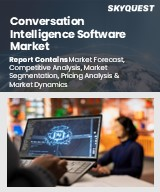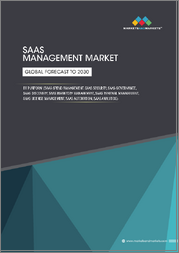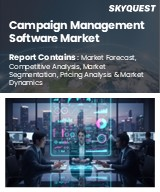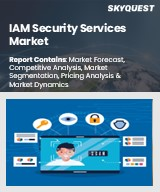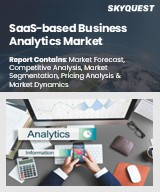
|
시장보고서
상품코드
1572885
세계의 SaaS 시장 - 산업 규모, 점유율, 동향, 기회, 예측 : 유형별, 용도별, 지역별 경쟁(2019-2029년)Software-as-a-Service Market - Global Industry Size, Share, Trends, Opportunity, and Forecast, Segmented By Type, By Application, By Region & Competition, 2019-2029F |
||||||
SaaS 세계 시장 규모는 2023년에 2,767억 5,000만 달러로, 2029년까지의 예측 기간 중 CAGR은 18.75%로 견조한 성장이 예측되고 있습니다.
세계의 SaaS 시장은 이 지역의 기술적 전망을 형성하는 다양한 요인의 합류로 역동적인 성장을 이루고 있습니다. SaaS의 채용은 IT 및 통신, 은행/금융서비스/보험(BFSI), 제조, 소매, 헬스케어 등의 주요 산업이 클라우드 기반의 솔루션을 채용하여 다양한 부문에 변화를 가져다주는 특징이 있습니다. 이 지역의 기업은 SaaS 용도이 제공하는 민첩성, 확장성 및 비용 효율성을 인식하고 있으며, 기술을 비즈니스 효율성과 혁신의 촉매제로 자리매김하고 있습니다. 용도 분야에서는 고객관계관리(CRM), 산업분야에서는 정보기술이나 통신 등 특정 부문이 우위를 차지하고 있는 것은 SaaS와 각 분야의 요구가 전략적으로 정합하고 있음을 반영하고 있습니다. 또한 디지털 변환에 중점을 두는 경향이 커지고 원격 근무 문화의 상승과 기업 생태계의 확대가 SaaS 솔루션의 보급에 기여하고 있습니다. 다양한 국가들이 급속히 진화하는 디지털 상황의 복잡성을 극복하고 있는 가운데 SaaS 시장은 여전히 매우 중요한 추진력이며 기업이 최첨단 기술을 활용하고 프로세스를 합리화하며 세계화된 시장에서 경쟁 힘을 유지할 수 있도록 지원하고 있습니다.
| 시장 개요 | |
|---|---|
| 예측 기간 | 2025-2029년 |
| 시장 규모 : 2023년 | 2,767억 5,000만 달러 |
| 시장 규모 : 2029년 | 7,830억 3,000만 달러 |
| CAGR: 2024-2029년 | 18.75% |
| 급성장 부문 | SCM |
| 최대 시장 | 북미 |
시장 성장 촉진요인
디지털 변혁에 대한 노력
클라우드 컴퓨팅 채택 확대
원격 근무 문화의 상승
비용 효율성과 확장성의 중요성
기업이 정신과 중소기업 생태계 성장
주요 시장 과제
연결성 및 인프라 한계: 데이터 프라이버시 및 컴플라이언스에 대한 우려
데이터 프라이버시 및 규정 준수
문화와 언어의 다양성
경제 변동과 예산 제약
변화에 대한 저항과 레거시 시스템의 통합
주요 시장 동향
클라우드 기반 솔루션의 급속한 보급
업계 특화형 솔루션에 대한 주목의 향상
협업 및 커뮤니케이션 도구 도입
인공지능(AI)과 머신러닝(ML)의 통합
데이터 보안 및 컴플라이언스 중요성 향상
목차
제1장 개요
- 시장의 정의
- 시장 범위
- 대상 시장
- 조사 대상년도
- 주요 시장 세분화
제2장 조사 방법
제3장 주요 요약
제4장 COVID-19가 세계 SaaS 시장에 미치는 영향
제5장 고객의 목소리
제6장 세계의 SaaS 시장 개요
제7장 세계의 SaaS 시장 전망
- 시장 규모와 예측
- 금액별
- 시장 점유율·예측
- 유형별(ERP, CRM, HRM, SCM)
- 용도별(은행/금융서비스/보험(BFSI), IT 및 통신, 제조, 소매, 헬스케어, 기타)
- 지역별(북미, 유럽, 남미, 중동 및 아프리카, 아시아태평양)
- 기업별(2023)
- 시장 맵
제8장 북미의 SaaS 시장 전망
- 시장 규모와 예측
- 금액별
- 시장 점유율·예측
- 유형별
- 용도별
- 국가별
- 북미: 국가별 분석
- 미국
- 캐나다
- 멕시코
제9장 유럽의 SaaS 시장 전망
- 시장 규모와 예측
- 금액별
- 시장 점유율·예측
- 유형별
- 용도별
- 국가별
- 유럽: 국가별 분석
- 독일
- 프랑스
- 영국
- 이탈리아
- 스페인
제10장 남미의 SaaS 시장 전망
- 시장 규모와 예측
- 금액별
- 시장 점유율·예측
- 유형별
- 용도별
- 국가별
- 남미 : 국가별 분석
- 브라질
- 콜롬비아
- 아르헨티나
제11장 중동 및 아프리카의 SaaS 시장 전망
- 시장 규모와 예측
- 금액별
- 시장 점유율·예측
- 유형별
- 용도별
- 국가별
- 중동 및 아프리카: 국가별 분석
- 사우디아라비아
- 아랍에미리트(UAE)
- 남아프리카
제12장 아시아태평양의 SaaS 시장 전망
- 시장 규모와 예측
- 금액별
- 시장 점유율·예측
- 유형별
- 용도별
- 국가별
- 아시아태평양: 국가별 분석
- 중국
- 인도
- 일본
- 한국
- 호주
제13장 시장 역학
- 성장 촉진요인
- 과제
제14장 시장 동향과 발전
제15장 기업 프로파일
- Microsoft Corporation
- Salesforce, Inc.
- SAP SE
- StoneCo Ltd.
- Adobe Inc.
- Oracle Corporation
- MangoDB, Inc.
- Zoho Corporation Pvt. Ltd.
- Atlassian Pty Ltd
- Keka Technologies Private Limited
제16장 전략적 제안
제17장 기업 소개와 면책사항
JHS 24.11.06Global Software-as-a-Service (SaaS) Market was valued at USD 276.75 Billion in 2023 and is anticipated to project robust growth in the forecast period with a CAGR 18.75% through 2029F. The Global Software-as-a-Service (SaaS) market is experiencing dynamic growth, driven by a confluence of factors shaping the region's technological landscape. SaaS adoption is characterized by its transformative impact across various sectors, with key industries like IT & Telecommunication, BFSI, Manufacturing, Retail, Healthcare, and others embracing cloud-based solutions. The region's businesses recognize the agility, scalability, and cost-effectiveness offered by SaaS applications, positioning technology as a catalyst for operational efficiency and innovation. The dominance of specific segments, such as Customer Relationship Management (CRM) in applications and Information Technology and Telecommunication in industries, reflects the strategic alignment of SaaS with sector-specific needs. Additionally, the region's growing emphasis on digital transformation, the rise of remote work culture, and the expanding entrepreneurship ecosystem contribute to the widespread adoption of SaaS solutions. As various countries continues to navigate the complexities of a rapidly evolving digital landscape, the SaaS market remains a pivotal driver, empowering businesses to leverage cutting-edge technologies, streamline processes, and stay competitive in a globalized marketplace.
| Market Overview | |
|---|---|
| Forecast Period | 2025-2029 |
| Market Size 2023 | USD 276.75 Billion |
| Market Size 2029 | USD 783.03 Billion |
| CAGR 2024-2029 | 18.75% |
| Fastest Growing Segment | SCM |
| Largest Market | North America |
Key Market Drivers
Digital Transformation Initiatives:
Digital transformation initiatives are propelling the growth of the SaaS market as businesses across the region embrace technology to enhance efficiency and competitiveness. Companies are recognizing the need to modernize their operations, optimize processes, and stay agile in a rapidly evolving business landscape. SaaS solutions play a pivotal role in these initiatives by offering scalable, cost-effective, and easily deployable tools that facilitate the transition from traditional software models to cloud-based, data-driven approaches. The increasing focus on digital transformation as a strategic imperative positions SaaS at the forefront of empowering businesses to harness the benefits of the digital age.
Increasing Embrace of Cloud Computing:
The widespread adoption of cloud computing is a major driver fueling the expansion of the SaaS market. Organizations are shifting from on-premises software models to cloud-based solutions to leverage the scalability, flexibility, and accessibility offered by the cloud. This trend is accelerated by the realization that cloud-based SaaS applications enable businesses to streamline operations, reduce upfront infrastructure costs, and enhance collaboration across distributed teams. The increasing availability of robust cloud infrastructure and the recognition of its strategic advantages are driving businesses in Latin America to prioritize SaaS solutions, making cloud computing a significant driver in the region's SaaS market growth.
Rise of Remote Work Culture:
The rise of remote work culture, accelerated by global events such as the COVID-19 pandemic, is a driving force behind the increased adoption of SaaS solutions globally. As businesses adapt to flexible work arrangements and distributed teams, the demand for collaboration tools, project management platforms, and communication applications has surged. SaaS providers offering solutions that facilitate remote work, including video conferencing, team collaboration, and productivity tools, are witnessing heightened demand. This trend underscores the pivotal role of SaaS in supporting the evolving nature of work, enabling businesses in Latin America to maintain productivity and connectivity in a dispersed and digital workspace.
Focus on Cost-Efficiency and Scalability:
The emphasis on cost-efficiency and scalability is a key driver shaping the SaaS market. Organizations are prioritizing solutions that offer predictable subscription-based pricing models, eliminating the need for significant upfront investments in software licenses and infrastructure. SaaS enables businesses to scale operations seamlessly, adjusting resources and functionalities based on evolving needs. This aligns with the financial considerations of companies in regions like North America, allowing them to optimize costs, access cutting-edge technologies, and stay competitive in a dynamic market. The appeal of SaaS as a cost-effective and scalable solution is driving its widespread adoption across various industries in the region.
Growing Entrepreneurship and Small Business Ecosystem:
The growing entrepreneurship and small business ecosystem are contributing to the vibrant expansion of the SaaS market. Startups and small businesses, often characterized by agile operations and a focus on innovation, find SaaS solutions particularly appealing. These businesses leverage SaaS applications for essential functions such as customer relationship management, accounting, human resources, and marketing. The availability of user-friendly, affordable, and specialized SaaS tools empowers entrepreneurs to access sophisticated functionalities without the need for extensive IT infrastructure. This trend not only fuels the growth of the SaaS market but also fosters a culture of innovation and efficiency among emerging businesses globally.
Key Market Challenges
Connectivity and Infrastructure Limitations:
One of the primary challenges facing the SaaS market is the region's uneven technology infrastructure and connectivity issues. While major urban centers may have robust internet infrastructure, remote areas may experience limitations in high-speed internet access. This digital divide hampers the seamless adoption of SaaS solutions, particularly in industries relying heavily on real-time data and cloud-based applications. Overcoming this challenge requires collaborative efforts between governments, telecom providers, and SaaS vendors to expand and improve digital infrastructure, ensuring that businesses across Latin America can fully leverage the benefits of SaaS without connectivity barriers.
Data Privacy and Compliance Concerns:
Data privacy and compliance represent a significant challenge for the SaaS market. With the introduction of stringent data protection regulations, such as Brazil's LGPD (Lei Geral de Protecao de Dados), organizations are tasked with ensuring that SaaS solutions adhere to these evolving compliance standards. Navigating the complex landscape of data protection laws across multiple countries in Latin America poses a challenge for SaaS vendors. Businesses need to carefully assess the data residency requirements, implement robust security measures, and provide transparent data handling practices to gain and maintain the trust of users while ensuring compliance with regional and international regulations.
Cultural and Linguistic Diversity:
The cultural and linguistic diversity across Latin American countries poses a unique challenge for SaaS providers. To effectively penetrate and serve this market, vendors must tailor their solutions to accommodate diverse languages, business practices, and cultural nuances. Customizing user interfaces, documentation, and customer support in multiple languages becomes imperative to ensure widespread adoption. Additionally, understanding the specific needs and preferences of various industries and regions within Latin America is crucial for SaaS providers to deliver solutions that resonate with the diverse user base. Balancing this diversity while maintaining a cohesive and user-friendly experience is a challenge that requires a nuanced and adaptable approach.
Economic Variability and Budget Constraints:
The economic variability across Latin American countries introduces challenges related to budget constraints and financial stability for businesses considering SaaS adoption. Fluctuations in currency values, inflation rates, and economic uncertainties in some regions may impact organizations' ability to invest in SaaS solutions. SaaS vendors must address these challenges by offering flexible pricing models, scalable solutions, and strategic partnerships that align with the financial realities of businesses in Latin America. Additionally, educating potential clients on the long-term cost-effectiveness and operational efficiencies gained through SaaS adoption is crucial to overcome initial budgetary concerns.
Resistance to Change and Legacy Systems Integration:
Resistance to change and the integration of SaaS solutions with existing legacy systems present significant challenges in the market. Some organizations may be hesitant to migrate from traditional software models to cloud-based SaaS due to concerns about data migration, system disruptions, and the learning curve associated with new technologies. SaaS providers need to offer seamless integration options, robust training programs, and clear communication strategies to address these concerns and facilitate a smooth transition. Additionally, compatibility with legacy systems is vital to ensure that businesses can harness the benefits of SaaS without compromising existing infrastructure or workflows.
Key Market Trends
Rapid Adoption of Cloud-Based Solutions:
The SaaS market is experiencing a rapid shift towards cloud-based solutions. Organizations across the region are embracing the scalability, flexibility, and cost-effectiveness offered by cloud-based SaaS applications. This trend is driven by the need for streamlined operations, improved accessibility, and reduced infrastructure costs. As businesses seek agility and real-time collaboration, the cloud has become the foundation for delivering SaaS solutions that cater to the evolving needs of enterprises.
Increased Focus on Industry-Specific Solutions:
A notable trend in the SaaS market is the increasing demand for industry-specific solutions. Businesses are seeking SaaS applications tailored to their unique requirements, whether in healthcare, finance, or manufacturing. Industry-specific SaaS solutions offer targeted functionalities, compliance features, and specialized integrations, aligning with the diverse landscape of businesses globally. This trend reflects a shift from one-size-fits-all solutions to a more customized approach, allowing organizations to optimize processes and address industry-specific challenges effectively.
Embrace of Collaboration and Communication Tools:
Collaboration and communication tools within the SaaS ecosystem are witnessing widespread adoption in Latin America. As remote work becomes a permanent feature, organizations are leveraging SaaS applications that facilitate seamless communication, project management, and collaboration among distributed teams. Video conferencing, team messaging, and project collaboration tools have become integral components of the business landscape, fostering productivity and enhancing teamwork. This trend underscores the importance of SaaS solutions in supporting the evolving nature of work and the need for effective communication channels.
Integration of Artificial Intelligence (AI) and Machine Learning (ML):
The integration of AI and ML technologies into SaaS applications is a prominent trend shaping the market. Organizations are recognizing the value of data-driven insights, automation, and predictive analytics offered by AI and ML. SaaS solutions that leverage these technologies enhance decision-making, improve user experiences, and optimize workflows. From customer relationship management to data analysis, the infusion of AI and ML in SaaS applications is driving innovation and efficiency across various sectors in Latin America, signaling a move towards more intelligent and adaptive software solutions.
Growing Emphasis on Data Security and Compliance:
Data security and compliance have become paramount considerations in the SaaS market. With an increasing awareness of data privacy regulations and the need for robust security measures, organizations are prioritizing SaaS solutions that offer stringent data protection features. SaaS providers are responding by implementing advanced encryption, secure access controls, and compliance functionalities to ensure the confidentiality and integrity of user data. This trend reflects the maturation of the SaaS market in Latin America, with businesses placing a high premium on solutions that not only enhance efficiency but also meet rigorous standards for data security and regulatory compliance.
Segmental Insights
Type Insights
CRM segment dominates in the global Software-as-a-Service (SaaS) market in 2023. The dominance of CRM in the SaaS market is driven by several key factors. Businesses in the region recognize the paramount importance of fostering robust relationships with customers. CRM solutions offer a comprehensive suite of tools and functionalities designed to manage and analyze customer interactions throughout the entire lifecycle. From lead generation and sales pipeline management to customer support and post-sale engagement, CRM SaaS platforms empower organizations to create personalized and meaningful interactions with their clientele.
The flexibility and scalability of CRM SaaS solutions align with the diverse needs of businesses in Latin America. The subscription-based model allows companies to access advanced CRM functionalities without the need for substantial upfront investments in software licenses or infrastructure. This affordability factor makes CRM SaaS particularly attractive to small and medium-sized enterprises (SMEs) and emerging startups, which form a significant portion of the business landscape.
In the context of dynamic and evolving market, where customer-centric strategies are increasingly prioritized, CRM SaaS provides a strategic advantage. It facilitates the gathering of customer data, allowing businesses to derive actionable insights and tailor their offerings to meet specific needs and preferences. Additionally, the accessibility of CRM tools from anywhere with an internet connection supports the growing trend of remote work and facilitates collaboration across dispersed teams, a particularly relevant feature in the current business environment.
As businesses place a heightened emphasis on customer satisfaction, loyalty, and efficient sales processes, CRM SaaS emerges as the linchpin technology that empowers them to achieve these objectives. The robust adoption of CRM within the SaaS market signifies a strategic recognition of the pivotal role customer relationships play in business success and underscores the region's commitment to leveraging advanced technologies to drive growth and competitiveness. Overall, the CRM segment stands out as a key driver in shaping the landscape of SaaS adoption.
Regional Insights
North America dominated the Global Software-as-a-Service (SaaS) Market in 2023. North America is home to many of the world's leading technology companies that specialize in SaaS offerings. These companies have the resources, expertise, and infrastructure to develop cutting-edge solutions that resonate with the evolving needs of businesses globally, including those in LATAM. The reputation and established market presence of North American
North American companies have been instrumental in setting industry standards and best practices in the SaaS domain. Their early and sustained investments in research and development, coupled with a culture of innovation, have positioned them as trendsetters. This influence extends beyond their home market, impacting the adoption and preferences of businesses in LATAM that seek to align with global technological standards.
The strong economic ties between North America foster the transfer of technology, knowledge, and business practices. As North American enterprises expand their footprint into LATAM, they bring with them established SaaS solutions, creating a natural preference for these platforms among local businesses. This cross-regional collaboration further strengthens the dominance of North American companies in the SaaS market.
Key Market Players
- Microsoft Corporation
- Salesforce, Inc.
- SAP SE
- StoneCo Ltd.
- Adobe Inc.
- Oracle Corporation
- MangoDB, Inc.
- Zoho Corporation Pvt. Ltd.
- Atlassian Pty Ltd
- Keka Technologies Private Limited
Report Scope:
In this report, the Global Software-as-a-Service (SaaS) Market has been segmented into the following categories, in addition to the industry trends which have also been detailed below:
Software-as-a-Service (SaaS) Market, By Type:
- ERP
- CRM
- HRM
- SCM
Software-as-a-Service (SaaS) Market, By Application:
- BFSI
- IT & Telecommunication
- Manufacturing
- Retail
- Healthcare
- Others
Software-as-a-Service (SaaS) Market, By Region:
- North America
- United States
- Canada
- Mexico
- Europe
- Germany
- France
- United Kingdom
- Italy
- Spain
- South America
- Brazil
- Argentina
- Colombia
- Asia-Pacific
- China
- India
- Japan
- South Korea
- Australia
- Middle East & Africa
- Saudi Arabia
- UAE
- South Africa
Competitive Landscape
Company Profiles: Detailed analysis of the major companies present in the Global Software-as-a-Service (SaaS) Market.
Available Customizations:
Global Software-as-a-Service (SaaS) Market report with the given market data, TechSci Research offers customizations according to a company's specific needs. The following customization options are available for the report:
Company Information
- Detailed analysis and profiling of additional market players (up to five).
Table of Contents
1. Service Overview
- 1.1. Market Definition
- 1.2. Scope of the Market
- 1.2.1. Markets Covered
- 1.2.2. Years Considered for Study
- 1.2.3. Key Market Segmentations
2. Research Methodology
- 2.1. Baseline Methodology
- 2.2. Key Industry Partners
- 2.3. Major Association and Secondary Sources
- 2.4. Forecasting Methodology
- 2.5. Data Triangulation & Validation
- 2.6. Assumptions and Limitations
3. Executive Summary
4. Impact of COVID-19 on Global Software-as-a-Service (SaaS) Market
5. Voice of Customer
6. Global Software-as-a-Service (SaaS) Market Overview
7. Global Software-as-a-Service (SaaS) Market Outlook
- 7.1. Market Size & Forecast
- 7.1.1. By Value
- 7.2. Market Share & Forecast
- 7.2.1. By Type (ERP, CRM, HRM, SCM)
- 7.2.2. By Application (BFSI, IT & Telecommunication, Manufacturing, Retail, Healthcare, Others)
- 7.2.3. By Region (North America, Europe, South America, Middle East & Africa, Asia Pacific)
- 7.3. By Company (2023)
- 7.4. Market Map
8. North America Software-as-a-Service (SaaS) Market Outlook
- 8.1. Market Size & Forecast
- 8.1.1. By Value
- 8.2. Market Share & Forecast
- 8.2.1. By Type
- 8.2.2. By Application
- 8.2.3. By Country
- 8.3. North America: Country Analysis
- 8.3.1. United States Software-as-a-Service (SaaS) Market Outlook
- 8.3.1.1. Market Size & Forecast
- 8.3.1.1.1. By Value
- 8.3.1.2. Market Share & Forecast
- 8.3.1.2.1. By Type
- 8.3.1.2.2. By Application
- 8.3.1.1. Market Size & Forecast
- 8.3.2. Canada Software-as-a-Service (SaaS) Market Outlook
- 8.3.2.1. Market Size & Forecast
- 8.3.2.1.1. By Value
- 8.3.2.2. Market Share & Forecast
- 8.3.2.2.1. By Type
- 8.3.2.2.2. By Application
- 8.3.2.1. Market Size & Forecast
- 8.3.3. Mexico Software-as-a-Service (SaaS) Market Outlook
- 8.3.3.1. Market Size & Forecast
- 8.3.3.1.1. By Value
- 8.3.3.2. Market Share & Forecast
- 8.3.3.2.1. By Type
- 8.3.3.2.2. By Application
- 8.3.3.1. Market Size & Forecast
- 8.3.1. United States Software-as-a-Service (SaaS) Market Outlook
9. Europe Software-as-a-Service (SaaS) Market Outlook
- 9.1. Market Size & Forecast
- 9.1.1. By Value
- 9.2. Market Share & Forecast
- 9.2.1. By Type
- 9.2.2. By Application
- 9.2.3. By Country
- 9.3. Europe: Country Analysis
- 9.3.1. Germany Software-as-a-Service (SaaS) Market Outlook
- 9.3.1.1. Market Size & Forecast
- 9.3.1.1.1. By Value
- 9.3.1.2. Market Share & Forecast
- 9.3.1.2.1. By Type
- 9.3.1.2.2. By Application
- 9.3.1.1. Market Size & Forecast
- 9.3.2. France Software-as-a-Service (SaaS) Market Outlook
- 9.3.2.1. Market Size & Forecast
- 9.3.2.1.1. By Value
- 9.3.2.2. Market Share & Forecast
- 9.3.2.2.1. By Type
- 9.3.2.2.2. By Application
- 9.3.2.1. Market Size & Forecast
- 9.3.3. United Kingdom Software-as-a-Service (SaaS) Market Outlook
- 9.3.3.1. Market Size & Forecast
- 9.3.3.1.1. By Value
- 9.3.3.2. Market Share & Forecast
- 9.3.3.2.1. By Type
- 9.3.3.2.2. By Application
- 9.3.3.1. Market Size & Forecast
- 9.3.4. Italy Software-as-a-Service (SaaS) Market Outlook
- 9.3.4.1. Market Size & Forecast
- 9.3.4.1.1. By Value
- 9.3.4.2. Market Share & Forecast
- 9.3.4.2.1. By Type
- 9.3.4.2.2. By Application
- 9.3.4.1. Market Size & Forecast
- 9.3.5. Spain Software-as-a-Service (SaaS) Market Outlook
- 9.3.5.1. Market Size & Forecast
- 9.3.5.1.1. By Value
- 9.3.5.2. Market Share & Forecast
- 9.3.5.2.1. By Type
- 9.3.5.2.2. By Application
- 9.3.5.1. Market Size & Forecast
- 9.3.1. Germany Software-as-a-Service (SaaS) Market Outlook
10. South America Software-as-a-Service (SaaS) Market Outlook
- 10.1. Market Size & Forecast
- 10.1.1. By Value
- 10.2. Market Share & Forecast
- 10.2.1. By Type
- 10.2.2. By Application
- 10.2.3. By Country
- 10.3. South America: Country Analysis
- 10.3.1. Brazil Software-as-a-Service (SaaS) Market Outlook
- 10.3.1.1. Market Size & Forecast
- 10.3.1.1.1. By Value
- 10.3.1.2. Market Share & Forecast
- 10.3.1.2.1. By Type
- 10.3.1.2.2. By Application
- 10.3.1.1. Market Size & Forecast
- 10.3.2. Colombia Software-as-a-Service (SaaS) Market Outlook
- 10.3.2.1. Market Size & Forecast
- 10.3.2.1.1. By Value
- 10.3.2.2. Market Share & Forecast
- 10.3.2.2.1. By Type
- 10.3.2.2.2. By Application
- 10.3.2.1. Market Size & Forecast
- 10.3.3. Argentina Software-as-a-Service (SaaS) Market Outlook
- 10.3.3.1. Market Size & Forecast
- 10.3.3.1.1. By Value
- 10.3.3.2. Market Share & Forecast
- 10.3.3.2.1. By Type
- 10.3.3.2.2. By Application
- 10.3.3.1. Market Size & Forecast
- 10.3.1. Brazil Software-as-a-Service (SaaS) Market Outlook
11. Middle East & Africa Software-as-a-Service (SaaS) Market Outlook
- 11.1. Market Size & Forecast
- 11.1.1. By Value
- 11.2. Market Share & Forecast
- 11.2.1. By Type
- 11.2.2. By Application
- 11.2.3. By Country
- 11.3. Middle East & Africa: Country Analysis
- 11.3.1. Saudi Arabia Software-as-a-Service (SaaS) Market Outlook
- 11.3.1.1. Market Size & Forecast
- 11.3.1.1.1. By Value
- 11.3.1.2. Market Share & Forecast
- 11.3.1.2.1. By Type
- 11.3.1.2.2. By Application
- 11.3.1.1. Market Size & Forecast
- 11.3.2. UAE Software-as-a-Service (SaaS) Market Outlook
- 11.3.2.1. Market Size & Forecast
- 11.3.2.1.1. By Value
- 11.3.2.2. Market Share & Forecast
- 11.3.2.2.1. By Type
- 11.3.2.2.2. By Application
- 11.3.2.1. Market Size & Forecast
- 11.3.3. South Africa Software-as-a-Service (SaaS) Market Outlook
- 11.3.3.1. Market Size & Forecast
- 11.3.3.1.1. By Value
- 11.3.3.2. Market Share & Forecast
- 11.3.3.2.1. By Type
- 11.3.3.2.2. By Application
- 11.3.3.1. Market Size & Forecast
- 11.3.1. Saudi Arabia Software-as-a-Service (SaaS) Market Outlook
12. Asia Pacific Software-as-a-Service (SaaS) Market Outlook
- 12.1. Market Size & Forecast
- 12.1.1. By Value
- 12.2. Market Share & Forecast
- 12.2.1. By Type
- 12.2.2. By Application
- 12.2.3. By Country
- 12.3. Asia Pacific: Country Analysis
- 12.3.1. China Software-as-a-Service (SaaS) Market Outlook
- 12.3.1.1. Market Size & Forecast
- 12.3.1.1.1. By Value
- 12.3.1.2. Market Share & Forecast
- 12.3.1.2.1. By Type
- 12.3.1.2.2. By Application
- 12.3.1.1. Market Size & Forecast
- 12.3.2. India Software-as-a-Service (SaaS) Market Outlook
- 12.3.2.1. Market Size & Forecast
- 12.3.2.1.1. By Value
- 12.3.2.2. Market Share & Forecast
- 12.3.2.2.1. By Type
- 12.3.2.2.2. By Application
- 12.3.2.1. Market Size & Forecast
- 12.3.3. Japan Software-as-a-Service (SaaS) Market Outlook
- 12.3.3.1. Market Size & Forecast
- 12.3.3.1.1. By Value
- 12.3.3.2. Market Share & Forecast
- 12.3.3.2.1. By Type
- 12.3.3.2.2. By Application
- 12.3.3.1. Market Size & Forecast
- 12.3.4. South Korea Software-as-a-Service (SaaS) Market Outlook
- 12.3.4.1. Market Size & Forecast
- 12.3.4.1.1. By Value
- 12.3.4.2. Market Share & Forecast
- 12.3.4.2.1. By Type
- 12.3.4.2.2. By Application
- 12.3.4.1. Market Size & Forecast
- 12.3.5. Australia Software-as-a-Service (SaaS) Market Outlook
- 12.3.5.1. Market Size & Forecast
- 12.3.5.1.1. By Value
- 12.3.5.2. Market Share & Forecast
- 12.3.5.2.1. By Type
- 12.3.5.2.2. By Application
- 12.3.5.1. Market Size & Forecast
- 12.3.1. China Software-as-a-Service (SaaS) Market Outlook
13. Market Dynamics
- 13.1. Drivers
- 13.2. Challenges
14. Market Trends and Developments
15. Company Profiles
- 15.1. Microsoft Corporation
- 15.1.1. Business Overview
- 15.1.2. Key Revenue and Financials
- 15.1.3. Recent Developments
- 15.1.4. Key Personnel
- 15.1.5. Key Product/Services Offered
- 15.2. Salesforce, Inc.
- 15.2.1. Business Overview
- 15.2.2. Key Revenue and Financials
- 15.2.3. Recent Developments
- 15.2.4. Key Personnel
- 15.2.5. Key Product/Services Offered
- 15.3. SAP SE
- 15.3.1. Business Overview
- 15.3.2. Key Revenue and Financials
- 15.3.3. Recent Developments
- 15.3.4. Key Personnel
- 15.3.5. Key Product/Services Offered
- 15.4. StoneCo Ltd.
- 15.4.1. Business Overview
- 15.4.2. Key Revenue and Financials
- 15.4.3. Recent Developments
- 15.4.4. Key Personnel
- 15.4.5. Key Product/Services Offered
- 15.5. Adobe Inc.
- 15.5.1. Business Overview
- 15.5.2. Key Revenue and Financials
- 15.5.3. Recent Developments
- 15.5.4. Key Personnel
- 15.5.5. Key Product/Services Offered
- 15.6. Oracle Corporation
- 15.6.1. Business Overview
- 15.6.2. Key Revenue and Financials
- 15.6.3. Recent Developments
- 15.6.4. Key Personnel
- 15.6.5. Key Product/Services Offered
- 15.7. MangoDB, Inc.
- 15.7.1. Business Overview
- 15.7.2. Key Revenue and Financials
- 15.7.3. Recent Developments
- 15.7.4. Key Personnel
- 15.7.5. Key Product/Services Offered
- 15.8. Zoho Corporation Pvt. Ltd.
- 15.8.1. Business Overview
- 15.8.2. Key Revenue and Financials
- 15.8.3. Recent Developments
- 15.8.4. Key Personnel
- 15.8.5. Key Product/Services Offered
- 15.9. Atlassian Pty Ltd
- 15.9.1. Business Overview
- 15.9.2. Key Revenue and Financials
- 15.9.3. Recent Developments
- 15.9.4. Key Personnel
- 15.9.5. Key Product/Services Offered
- 15.10.Keka Technologies Private Limited
- 15.10.1. Business Overview
- 15.10.2. Key Revenue and Financials
- 15.10.3. Recent Developments
- 15.10.4. Key Personnel
- 15.10.5. Key Product/Services Offered
16. Strategic Recommendations
17. About Us & Disclaimer
(주말 및 공휴일 제외)









